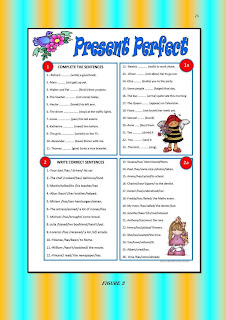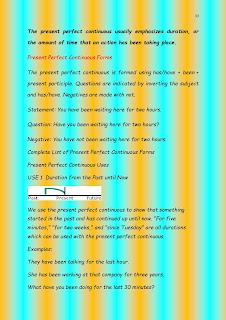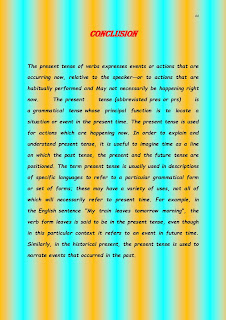SUBMITTED
TO SUBMITTED BY
MS.
TINTU SR.SINJU DANIEL
ASST.PROF THIRD SEM. EGLISH
MTTC
ROLL NO: 18
INTRODUCTION
The National Policy on Information and Communication
Technology in School Education (2012) developed by the Ministry of Human Resource
Development (MHRD), Government of India further emphasizes in its mission the statement “to devise, catalyze, support and sustain ICT and ICT enabled
activities and process in order to improve access, quality, and efficiency in
the school system”. Therefore, the education system is moving toward harnessing
the potential of ICT to serve the three cardinal principles of access, equity and
quality. The new integrated scheme – Samagra Siksha (2018) rolled out by Department
of School Education and Literacy, MHRD, Govt of India while advocating for
imparting quality school education and teacher education has emphasized on
providing quality E-Content as a pre-requisite for integrating ICT in
Education.
E-Content augments the learning experience by
deploying various media for visualization and explanation of abstract ideas.
Keeping in view the diverse needs of learners, now the use of e-Content has become
an essential component of the teaching and learning processes. eContent is
available in large numbers through various sources, but few of them are found
to have the desired quality in terms of content, pedagogy as well as technical
aspects. Copyright violations are rampant thereby restricting the scope of
customizing the e-Content according to the local needs.
Also with a plethora of smart and mobile devices,
teacher and student-driven e Contents are available in abundance in the market.
E Contents are prepared by agencies and organizations as well as individuals.
In this situation, the quality of such e Contents may be questionable; hence it is
important to develop clear guidelines for preparing quality and standard e
Content. Wide varieties of digital materials that are of educational
significance are available online. Some of the quality materials which are
available free of cost or with minimum restrictions can be used, re-used, and
modified by teachers and students for their teaching and learning. As textbooks
are too expensive, the students are switching from textbooks to digital course
materials.
These
materials provide both teachers and students greater interactivity and social
collaboration. One of the materials which can be designed and developed used,
re-used and distributed is e-content.
E-content
is becoming popular because of its flexibility of time, place, and pace of
learning. E-content includes all kinds of content
created and delivered through various electronic media. E-content is available
in many subjects and almost all levels of education. It can be used by wide
variety learners with diverse needs, different backgrounds, and previous
experience and skill levels. It can be shared and transmitted easily and
promptly among an unlimited number of users around the world. Teachers, students, and others get benefited from the use of well designed and developed e-content.
It is advantageous to educational organizations to make their program
accessible to their teachers and students on campus, at home, and in other community
learning or resource centers. It has significant implications for open and
distance learning institutions.
Electronic
content (E-content) which is also known as digital content refers to the
content or information delivered over network-based electronic devices or that
is made available using a computer network such as the internet.
According
to Oxford dictionary ‘E-content is the digital text and images designed to
display on web pages’. According to Saxena Anurag(2011), ‘E-content is basically
a package that satisfies the conditions
like minimization of distance, cost-effectiveness, user-friendliness and
adaptability to local conditions’.
Well
developed E-content can be delivered many times to different learners.
Individual course components i.e. units, lessons and media elements such as
graphics and animations can be re-used in different contexts.
GUIDELINES FOR
DEVELOPING ECONTENT
eContent is any form of learning material
available digitally which learners access or interacts with so as to achieve
related learning outcomes. eContent is becoming popular because it allows
flexibility in terms of time, place, and pace of learning. A resource-rich
environment is necessary for teaching and learning to be effective. However,
many of the educational resources are not easily accessible because of issues
related to copyright. Hence, there is a movement to produce learning resources
and make them available with open licenses which are known as Open Educational
Resources (OER).
Open
Educational Resources (OER) are freely available. Openly licensed materials and
media are useful for teaching, learning and assessing as well as for research
purposes. A wide variety of OER is available for free use for teachers,
instructors, researchers, and students. If used appropriately, digital learning
resources can add considerable value to the quality of teaching and to the
learners’ experience. eContent is often made up of separate units or a
combination of text, video, images and sound. These are the building blocks
that are often used to make composite learning objects that can be exhibited
in various presentation formats. Various forms of eContent are shown below:
 |
WHAT ARE THE STEPS IN
E-CONTENT DESIGNING?
E-content
development aspects consist of six phases includes analysis, design,
development, testing, implementation, and evaluation.
THE ANALYSIS PHASE:
It is the most important as it identifies the area in our current situation. This
phase accountability considered by the views of subject experts, target
audiences, objectives, and its goals. In this phase, we must know the audience,
and their skill, budget of the E-content, delivery methods, and its constraints
with due dates.
THE DESIGN PHASE:
It involves the complete design of the learning solution. It helps to plan of
an E-content preparation. In this phase, one must know the planning, use of
relevant software, required skills, creative and innovative interactions of
subject contents like texts, pictures, videos, and suitable animations.
THE DEVELOPMENT PHASE:
It concerns the actual production of the E-content design. It helps to create
the E-content by mixing of texts, audio, video, animations, references, blogs,
links, and MCQs (multiple choice questions)with some programming specifications
like home, exit, next etc.
THE IMPLEMENTATION
PHASE: It helps to administer the E-content to
the target audience. This phase explains how to install and how to use it and
their difficulties experienced while using E-content. It checks the product accuracy and quality maintenance.
THE EVALUATION PHASE:
It helps to satisfy the E- content and its effectiveness. This phase considers
feedback from both learners and instructors. After the feedback reactions, the
E-content is designed again as post-production for effective delivery of
E-content. Pedagogical Issues in E-Content development.
THE TESTING PHASE: It
helps to administer the E-content in the actual educational field. In this
phase, one must test the spelling mistakes, content errors, clarity of
pictures, relevant videos, appropriate audios, timing of animations, and
hyperlinks.
Easy
way to remember ADDIE- testing phase is not included by MHRD for e content
developing phases. But For sureity before implementing the e content testing
period is there.
 |
GUIDELINES FOR CURATING
E-CONTENT
Curation, in general, refers to
process of identification, evaluation, and selection of appropriate information meeting
as per requirement. Curation of eContent involves the following process:
Identification
of content relevant to the needs in terms of subject, content, age group,
method etc.
Evaluating
it as per the standard parameters.
Selecting
the appropriate eContent to suit the requirement of learners and teachers.
Curators
are people (individual/ groups) or services that do the meticulous work of
browsing and selecting the items of utmost relevance to the stakeholders.
Teacher, teacher educator, student, principal, or anyone in the school system
can be a curator. The curator must be able to critically analyze the eContent from
various perspectives to identify the appropriate one. Following parameters
shall be considered by the curators while curating eContent:
 |
CONCLUSION
Information
and Communication Technology (ICT) has become one of the building blocks of
modern society. Many countries now include mastering the basic ICT skills as
well as 21st-century skills (Communication, Collaboration, Creativity, Critical
Thinking and Problem Solving) as part of the core of basic education, along
with reading, writing, and arithmetic. ICT has undoubtedly brought a revolution
that has the immense potential to provide more engaging, collaborative, and
experiential learning platforms. Since the youth constitute more than 67% of
the Indian population, it is mandatory to design a curriculum that aids the skill
development of youth along with providing quality basic education. The present
government also emphasizes on skill development and the use of ICT for empowering
the youth. The Digital India campaign (2015) has emerged as a synonym for the technology revolution in India. To achieve the triple goals of Digital India
Campaign i.e., skill, scale and speed the use of ICT is the way out. The
government of India seeks to strengthen the use of ICT in almost every sphere
and hence the campaign is centered on three key areas – digital infrastructure
available for every citizen, governance and services on demand, and digital
empowerment of citizens.
BIBLIOGRAPHY
https://ciet.nic.in/upload/Guidelines_eContent_v1.pdf
https://www.iehe.ac.in/PDF/FDP/E-ContentDevelopmentGuidelines.pdf
https://online-journals.org/index.php/i-jet/article/download/5574/3881
https://www.diva-portal.org/smash/get/diva2:835370/FULLTEXT01.pdf











































































